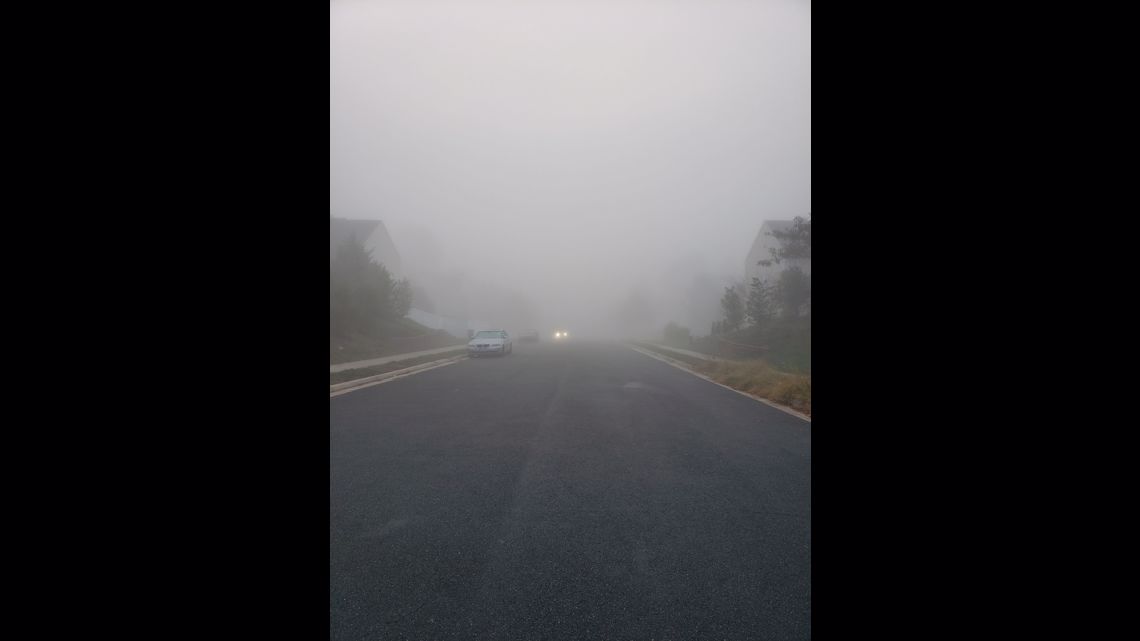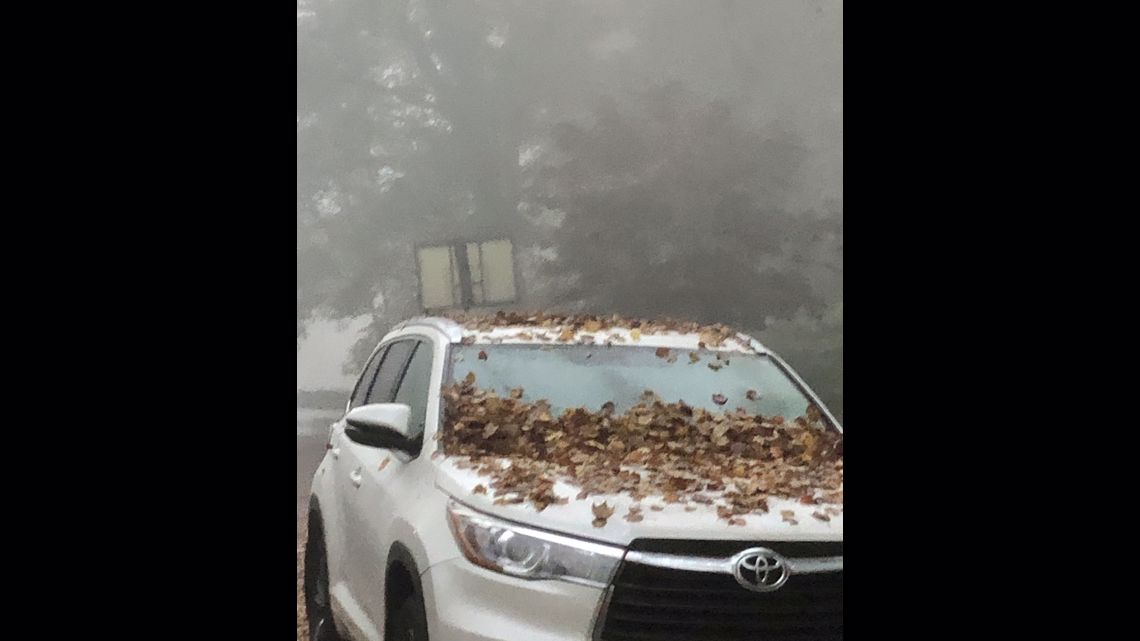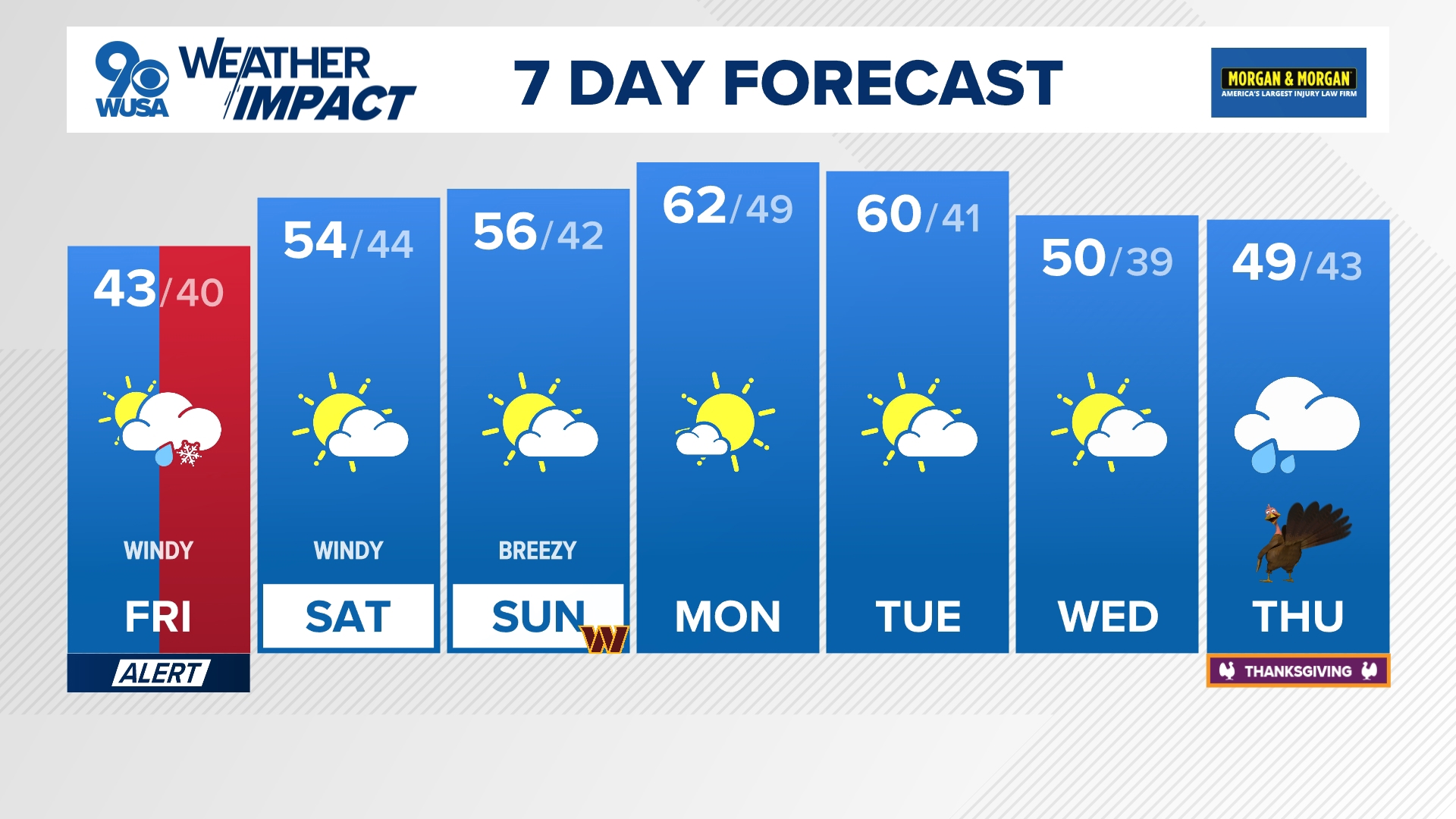WASHINGTON — It's thick and you can't see much of ahead of you: We're talking about the fog that has been covering the D.C. Metro area the last few days like a blanket on a cold winter morning.
Pictures of it have been trending on social media, with people driving through it describing it as "very thick, dense, limited visibility, very dark."
So why has it been occurring and why has it been so dense?
For the last few days we have had winds transporting in moisture and the marriage of temperature and dew point.
Winds from a mostly southerly direction have helped to bring in higher dew points.
When the air temperature becomes equal with the dew point temperature (or within a few degrees) the air becomes saturated (think of it as a sponge full of water). When saturation occurs, the air condenses and water droplets can form and become suspended, creating fog.
By the American Meteorological Society definition fog simply is :
"Water droplets suspended in the atmosphere in the vicinity the earth's surface that affect visibility."
For example, the reading at Reagan National Airport at 4:52 a.m. Thursday morning showed fog with an air temperature of 62 degrees and a dew point temperature of 62 degrees. The air was saturated. The closer or equal those two temperatures are the more moisture you have.
Fog typically dissipates as temperatures warm and the temperature and dew point spread further apart. Fog was present Tuesday morning as well. By 1:52 p.m. Tuesday afternoon, the temperature was 71 degrees and the dew point was 61 degrees. That's a decent spread. A further spread in temperatures makes the fog dissipate as the water droplets begin to evaporate.
There are several types of fog, based on the way it forms including super fog. With super fog, you may barely be able to see in front of your hand! This is a combination of moisture and smoke from smoldering brush, leaves, and trees.




How to Navigate Through Fog
Fog is in the forecast once again Thursday night into Friday morning. If your morning commute takes you out here are some tips from the National Weather Service on how to drive through fog safely:
- Slow down and allow extra time to reach your destination.
- Make your vehicle visible to others both ahead of you and behind you by using your low-beam headlights since this means your taillights will also be on. Use fog lights if you have them.
- Never use your high-beam lights. Using high beam lights causes glare, making it more difficult for you to see what’s ahead of you on the road.
- Leave plenty of distance between you and the vehicle in front of you to account for sudden stops or changes in the traffic pattern.
- To ensure you are staying in the proper lane, follow the lines on the road with your eyes.
- In extremely dense fog where visibility is near zero, the best course of action is to first turn on your hazard lights, then simply pull into a safe location such as a parking lot of a local business and stop.



